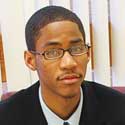Disability Resources and Services expands to meet students’ growing needs
With the population of students with disabilities on the rise both nationwide and at Temple, the university’s Department of Disability Resources and Services (DRS) has launched or significantly enhanced a sweeping range of initiatives to help students with disabilities get equal access to the best that a Temple education has to offer.
Among the ramped-up or new programs offered by DRS are the Federal Workforce Recruitment Program, a partnership with the federal government that has helped hundreds of Temple students with disabilities find paid internships with federal employers around the nation since its launch at Temple in 1996; Charlotte W. Newcombe Foundation scholarships, which support the retention of students with disabilities with demonstrated financial need; Access TU, a DRS-faculty-student partnership to produce a web-based video that helps students discuss their disability with instructors; and Project EDIT, a Verizon Foundation-funded program that brought together a group of 15 top Temple faculty members to explore ways to develop more inclusive teaching practices that support all students, especially those with disabilities.
“We’re not just about legal compliance,” said DRS Director John Bennett. “We’re about enabling success by building the whole student and helping them manage the challenges of being independent — often for the first time in their lives.”
About 1,100 students — just under 3 percent of Temple’s total student enrollment — are currently registered with DRS. The real size of Temple’s population of students with disabilities is several times higher. According to federal estimates, students with disabilities represented nearly 11 percent of all post-secondary students in the United States in 2008.
Part of what makes it difficult to grasp the true number of students with disabilities, Bennett explains, is that almost 90 percent of them have disabilities that are not immediately visible. According to DRS estimates, 44 percent of registered students have a learning disability such as dyslexia or attention deficit hyperactivity disorder, 23 percent have significant health conditions such as cystic fibrosis or cancer and another 21 percent have a psychological or emotional condition such as bipolar disorder or Asperger syndrome. Only about 12 percent have physical disabilities or disabilities that impact their vision or hearing.
The academic performance of students with disabilities is on a par with their non-disabled peers, says Bennett. The six-year graduation rate of Temple students with disabilities is higher than the university average, and Temple students with disabilities have been finalists for prestigious scholarships and awards — including the Rhodes Scholarship.
Finding employment is a more persistent challenge for students with disabilities, who still face stubborn negative stereotypes about on-the-job performance. “It’s hard enough getting good internships,” Bennett said. “(If you’ve) got a disability label on your back, it’s even harder.”
To help meet the need, Temple has expanded its participation in the Federal Workforce Recruitment Program, a comprehensive job-preparation initiative that places students with disabilities in summer internships in a range of federal agencies: the Coast Guard, NASA, the Central Intelligence Agency, the Department of Defense, the National Park Service and more. In 2009-10, 35 Temple students were interviewed by federal recruiters, up from 10 interviews in 2008-09. The target for 2010-11, says Bennett, is to have 100 students selected for interviews. At each step of the process, participating Temple students learn critical life and job skills: the art of interviewing, managing travel and commuting, purchasing a work wardrobe and more — with Charlotte W. Newcombe Foundation awards helping to defray many expenses, such as business attire, transportation costs or personal assistance, when necessary.

Carter’s travel expenses, which weren’t covered by public disability agencies or other financial resources, were paid using funds he received by successfully applying for a Newcombe Foundation scholarship. Temple students have received more than $1 million in Newcombe scholarships since 1981.